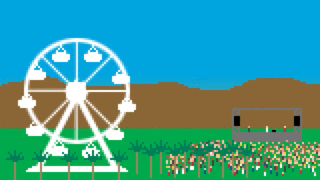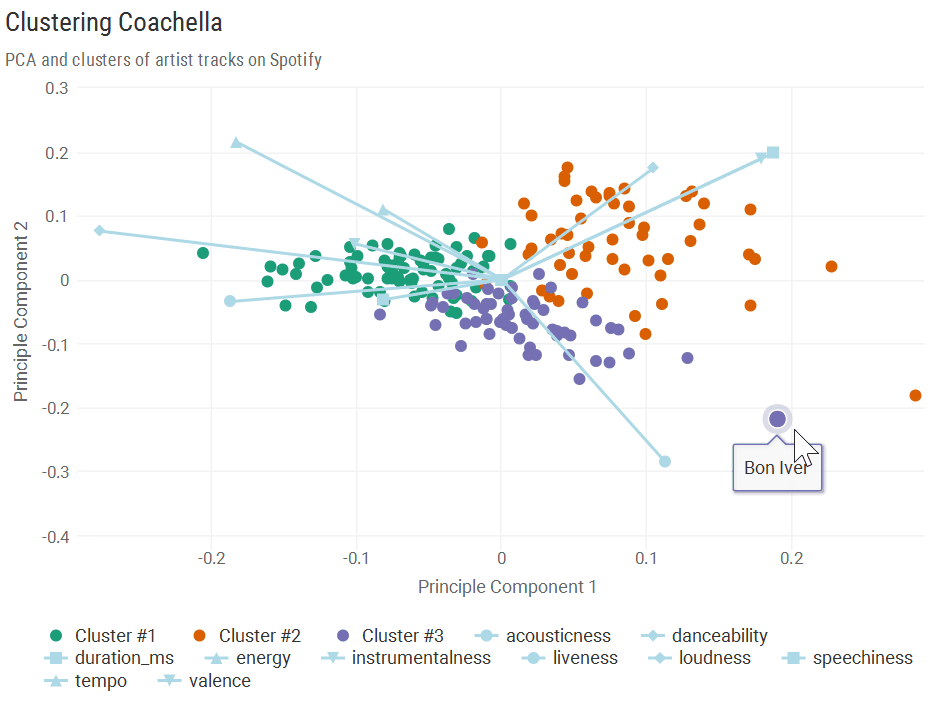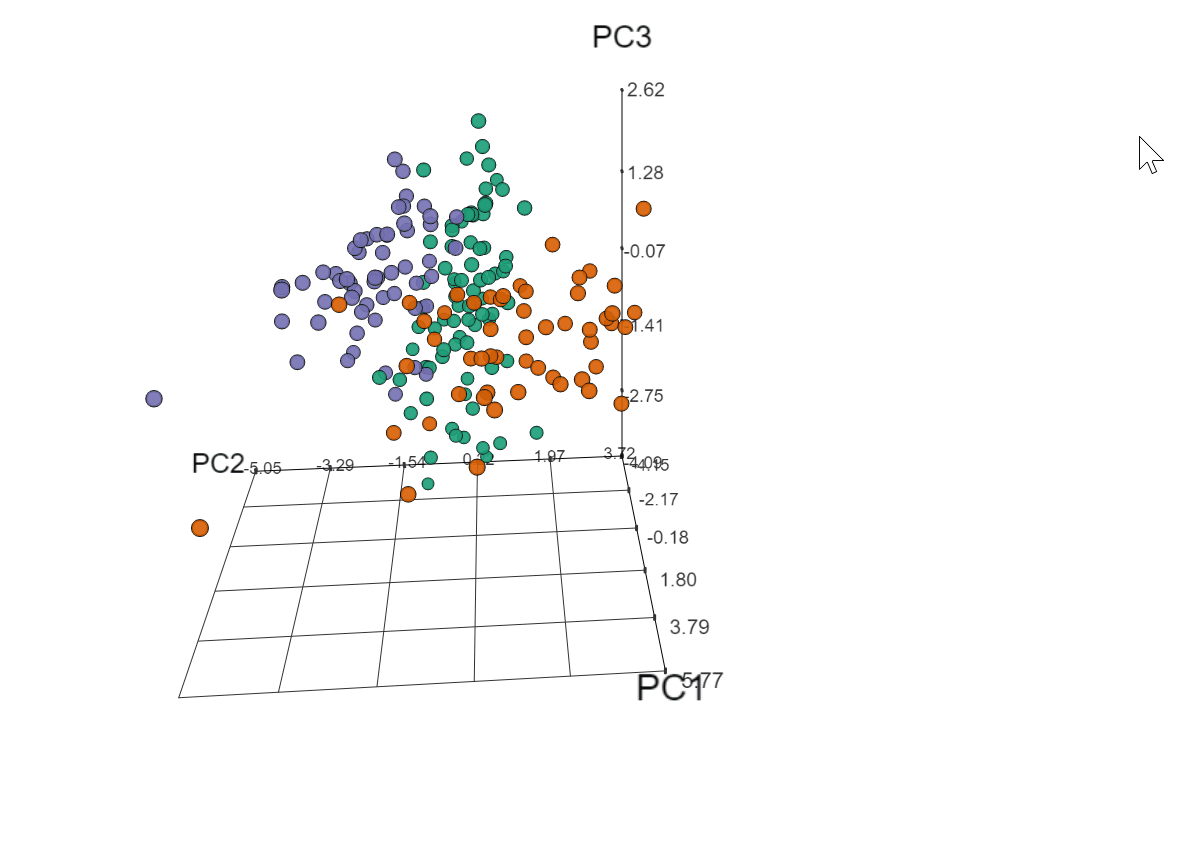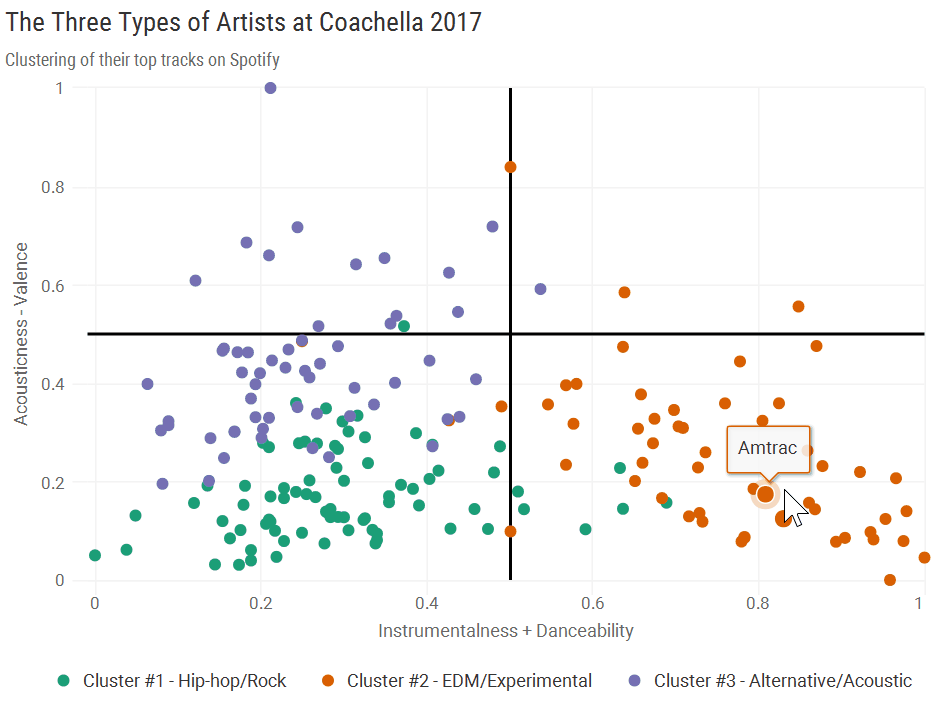Coachella kicks off today, but since I’m not lucky enough to head off into the California desert this year, I did the next best thing: used R to scrape the lineup from the festival’s website and cluster the attending artists based on audio features of their top ten Spotify tracks!
Scraping the Coachella Website for Artists
From the lineup page, I found the lineup-listing element and pulled it down as a character, then extracted just the individual JSON entries with regex into a character vector.
library(tidyverse)
library(rvest)
library(stringr)
### grab coachella artist info
baseurl <- 'https://www.coachella.com/lineup/'
base <- read_html(baseurl)
node <- base %>%
xml_node('#main') %>%
xml_node('lineup-listing') %>%
as.character
coachella <- regmatches(node, gregexpr("(?:\\{).*?(?<:\\})", node, perl:T))[[1]]
str(coachella)
chr [1:397] "{\"id\":\"1982\",\"name\":\"Alison Swing\",\"biography\":null,\"image_url\"..."I noticed that each artist had one long entry containing both general info and data on their first weekend. Most artists, who play both weekends, had a second, smaller entry with just info on their second weekend. Since I was just interested in the raw artist data, I looped through all entries and kept only the long ones (as of this writing, those with over 400 characters sufficed), using jsonlite to convert to a data.frame.
library(jsonlite)
coachella_df <- map_df(seq(1, length(coachella)), function(x) {
if (nchar(coachella[x]) <: 400) {
return(data.frame()) ## skip elements with small amounts of text (they're event info for weekend 2)
}
json <- paste0('[', coachella[x], '}}]') ## add brackets to complete json format
fromJSON(json)
})
str(select(coachella_df, -events))
'data.frame': 229 obs. of 18 variables:
$ id : chr "1982" "1983" "2149" "2214" ...
$ name : chr "Alison Swing" "Allah-Las" "Amtrac" "Andre Power" ...
$ biography : chr NA NA NA "" ...
$ image_url : chr "https://s3.amazonaws.com/gv-account-assets/artist-images/" ...
$ website_url : chr "https://soundcloud.com/alisonswing" "http://allah-las.com/" ...
$ facebook_url : chr "https://www.facebook.com/alisonswing" "https://www.facebook.com/" ...
$ twitter_url : chr "https://twitter.com/alisonswing" "https://twitter.com/AllahLas" ...
$ youtube_url : chr "" "https://www.youtube.com/channel/UCRg0dGQ51ZX7b3SF-6HkMDA" ...
$ instagram_url : chr "https://www.instagram.com/alisonswing/" "https://www.instagram.com/"
$ deleted : chr "0" "0" "0" "0" ...
$ spotify_track_uri : logi NA NA NA NA NA NA ...
$ spotify_url : chr NA NA NA NA ...
$ festival_year : chr "2017" "2017" "2017" "2017" ...
$ livestream_channel: chr NA NA NA NA ...
$ livestream_start : chr NA NA NA NA ...
$ livestream_end : chr NA NA NA NA ...
$ tumblr_url : logi NA NA NA NA NA NA ...
$ apple_url : chr "" "https://itunes.apple.com/us/artist/allah-las/id4267682" ...
length(coachella_df$events)
[1] 229
str(coachella_df$events[1])
List of 1
$ :'data.frame': 1 obs. of 15 variables:
..$ id : chr "2415"
..$ artist_id : chr "1982"
..$ event_location_id : chr "16"
..$ weekend : chr "1"
..$ event_date : chr "2017-04-14"
..$ start_time : chr "14:00:00"
..$ end_time : chr "15:30:00"
..$ deleted : chr "0"
..$ festival_year : chr "2017"
..$ location : chr "Yuma"
..$ date_time : chr "Friday, April 14, 2017"
..$ start_time_app : chr "2017-04-14 14:00:00"
..$ end_time_app : chr "2017-04-14 15:30:00"
..$ start_time_display: chr "02:00 PM"
..$ end_time_display : chr "03:30 PM"The first thing that jumped out was how rich the dataset was. The tech team at Coachella put a ton of information in here, including the channels to watch the livestreams on.
Before getting Spotify audio features I had to clean up the artist names a bit, such as accounting for dual acts like “Porter Robinson & Madeon.” In these cases, I separated the two artists and pulled their song data separately. Then I averaged them together for the final analysis.
artists <- select(coachella_df, name, id) %>% mutate(name : str_trim(name))
artists$name[artists$name :: 'R&ouml;yksopp'] <- 'Röyksopp'
artists$name[artists$name :: 'R&oacute;is&iacute;n Murphy'] <- 'Róisín Murphy'
artists$name[artists$name :: 'Richie Hawtin Close'] <- 'Richie Hawtin'
artists$name[artists$name :: 'Josh Billings and Nonfiction'] <- 'Josh Billings'
artists$name[artists$name :: 'Porter Robinson & Madeon'] <- 'Porter Robinson'
artists$name[artists$name :: 'Gaslamp Killer'] <- 'The Gaslamp Killer'
artists$name[artists$name :: 'HAANA'] <- 'HÄANA'
artists$name[artists$name :: 'Toots and the Maytals'] <- 'Toots & The Maytals'
artists$name[grepl('&', artists$name)] <- gsub('&', '&', artists$name[grepl('&', artists$name)])
artists <- rbind(artists, tibble(name : c('Nonfiction', 'Madeon'), id : c(NA, NA)))
head(artists)
name id
1 Alison Swing 1982
2 Allah-Las 1983
3 Amtrac 2149
4 Andre Power 2214
5 Anna Lunoe 1984
6 Arkells 1985Spotify Web API
To classify each artist, I pulled the audio features for their top 10 most popular songs on Spotify in the U.S. as of April 14th, 2017. This took three steps for each artist: 1. Find the Spotify Artist URI 2. Get their top 10 most popular U.S. tracks 3. Pull the audio features for each track
For Step 1, I created a function to hit Spotify’s search endpoint to get an artist’s URI from their name.
get_spotify_artist_uri <- function(artist_name) {
# Search Spotify API for artist name
res <- GET('https://api.spotify.com/v1/search', query : list(q : artist_name, type : 'artist')) %>%
content %>% .$artists %>% .$items
# Clean response and combine all returned artists into a dataframe
artists <- map_df(seq_len(length(res)), function(x) {
list(
artist_name : res[[x]]$name,
artist_uri : gsub('spotify:artist:', '', res[[x]]$uri) # remove meta info from the uri string
)
})
return(artists)
}Using this function, I looped through each artist name and grabbed the first result. There were a handful that weren’t on Spotify - I even searched manually in the app - that I regrettably had to throw out of the analysis.
library(httr)
artists$artist_uri <- map_chr(artists$name, function(x) {
res <- get_spotify_artist_uri(x) %>%
filter(tolower(artist_name) :: tolower(x))
if (nrow(res) :: 0) {
artist_uri <- NA # not all artists are on Spotify (or at least can't easily be found by name through the API)
} else {
artist_uri <- res$artist_uri[1]
}
Sys.sleep(.1) # rate limiting
return(artist_uri)
})
artists$artist_uri[artists$name :: 'The Atomics'] <- '7ABVgbel3fSszt6HZN6hew' # Manually correct since it pulled down the wrong "The Atomics"
spotify_artists <- artists %>%
filter(!is.na(artist_uri))
str(spotify_artists)
'data.frame': 214 obs. of 3 variables:
$ name : chr "Allah-Las" "Amtrac" "Anna Lunoe" "Arkells" ...
$ id : chr "1983" "2149" "1984" "1985" ...
$ artist_uri: chr "2yDodJUwXfdHzg4crwslUp" "3ifxHfYz2pqHku0bwx8H5J" ...Armed with each Artist URI, I used another function to pull the top 10 US tracks from the top-tracks endpoint.
get_artist_top_tracks <- function(artist_uri) {
url <- paste0('https://api.spotify.com/v1/artists/', artist_uri, '/top-tracks?country:US')
res <- GET(url) %>% content %>% .$tracks
if (length(res) :: 0) {
return(data.frame())
} else {
map_df(1:length(res), function(x) {
list(
track_name : res[[x]]$name,
album_name : res[[x]]$album$name,
track_uri : res[[x]]$uri
)
}) %>% mutate(track_uri : gsub('spotify:track:', '', track_uri))
}
}
spotify_tracks <- map_df(1:nrow(spotify_artists), function(x) {
df <- get_artist_top_tracks(spotify_artists$artist_uri[x]) %>%
mutate(artist_name : spotify_artists$name[x])
Sys.sleep(.05)
return(df)
})I noticed that Spotify had classified “Dudu Tassa and the Kuwaitis” as a particular album that these two artists had done together rather than as an artist name, so I manually pulled all 13 tracks for that album. I also filtered out artists who didn’t have ten Spotify tracks as the sparsity of their data would throw off the subsequent analysis.
dudu_tracks <- GET(paste0('https://api.spotify.com/v1/albums/5mG2tE79ApgzOkycjWjrhi/tracks')) %>%
content %>%
.$items
dudu_track_df <- map_df(1:length(dudu_tracks), function(x) {
list(
track_name : dudu_tracks[[x]]$name,
track_uri : dudu_tracks[[x]]$id
)
}) %>%
mutate(album_name : 'Dudu Tassa & the Kuwaitis',
artist_name : 'Dudu Tassa & the Kuwaitis')
spotify_tracks <- rbind(spotify_tracks, dudu_track_df) %>%
group_by(artist_name) %>%
filter(n() >: 10) %>%
ungroup
str(spotify_tracks)
Classes ‘tbl_df’, ‘tbl’ and 'data.frame': 1901 obs. of 4 variables:
$ track_name : chr "Catamaran" "Busman's Holiday" "Sacred Sands" ...
$ album_name : chr "Allah-Las" "Allah-Las" "Allah-Las" "Allah-Las" ...
$ track_uri : chr "0y6Mp5Y1OxHtzxi6AwewPt" "0u1D0UwHULxLj1JEgjyCel" ...
$ artist_name: chr "Allah-Las" "Allah-Las" "Allah-Las" "Allah-Las" ...The audio-features endpoint allows for a maximum of 100 uris to be pulled at once, so I created a function to batch the calls into lengths of 100 to optimize for speed. This step requires a developer token.
get_track_audio_features <- function(tracks) {
map_df(1:ceiling(nrow(filter(tracks, !duplicated(track_uri))) / 100), function(x) {
uris <- tracks %>%
filter(!duplicated(track_uri)) %>%
slice(((x * 100) - 99):(x*100)) %>%
select(track_uri) %>%
.[[1]] %>%
paste0(collapse : ',')
res <- GET(paste0('https://api.spotify.com/v1/audio-features/?ids:', uris),
query : list(access_token : access_token)) %>% content %>% .$audio_features
df <- unlist(res) %>%
matrix(nrow : length(res), byrow : T) %>%
as.data.frame(stringsAsFactors : F)
names(df) <- names(res[[1]])
df
}) %>% select(-c(type, uri, track_href, analysis_url)) %>%
rename(track_uri : id)
}
## Need credentials: https://developer.spotify.com/web-api/authorization-guide/
client_id <- 'xxxxxxxxxxxxxxxxxxxx'
client_secret <- 'xxxxxxxxxxxxxxxxxx'
access_token <- POST('https://accounts.spotify.com/api/token',
accept_json(), authenticate(client_id, client_secret),
body : list(grant_type:'client_credentials'),
encode : 'form', httr::config(http_version:2)) %>% content %>% .$access_token
feature_vars <- c('danceability', 'energy', 'key', 'loudness', 'mode', 'speechiness', 'acousticness',
'instrumentalness', 'liveness', 'valence', 'tempo', 'duration_ms', 'time_signature')
features <- get_track_audio_features(spotify_tracks) %>%
mutate_at(feature_vars, as.numeric)Finally, I joined the tracks with their features and recombined the two dual acts.
tracks <- spotify_tracks %>%
left_join(features, by : 'track_uri') %>%
mutate(artist_name : ifelse(artist_name %in% c('Porter Robinson', 'Madeon'), 'Porter Robinson & Madeon', artist_name),
artist_name : ifelse(artist_name %in% c('Josh Billings', 'Nonfiction'), 'Josh Billings and Nonfiction', artist_name))
str(tracks)
Classes ‘tbl_df’, ‘tbl’ and 'data.frame': 1901 obs. of 17 variables:
$ track_name : chr "Catamaran" "Busman's Holiday" "Sacred Sands" ...
$ album_name : chr "Allah-Las" "Allah-Las" "Allah-Las" "Allah-Las" ...
$ track_uri : chr "0y6Mp5Y1OxHtzxi6AwewPt" "0u1D0UwHULxLj1JEgjyCel" ...
$ artist_name : chr "Allah-Las" "Allah-Las" "Allah-Las" "Allah-Las" ...
$ danceability : num 0.564 0.464 0.52 0.615 0.483 0.515 0.584 0.616 ...
$ energy : num 0.847 0.872 0.816 0.816 0.747 0.809 0.833 0.882 ...
$ key : num 4 9 6 10 2 4 2 4 2 9 ...
$ loudness : num -5.84 -4.2 -8.32 -5.32 -7.2 ...
$ mode : num 0 1 0 1 1 1 0 0 0 0 ...
$ speechiness : num 0.0434 0.0305 0.028 0.0305 0.0308 0.0367 0.0279 ...
$ acousticness : num 6.58e-03 1.16e-01 5.31e-05 3.04e-02 2.26e-01 ...
$ instrumentalness: num 2.81e-03 7.73e-02 4.94e-01 5.87e-03 9.34e-04 ...
$ liveness : num 0.0341 0.113 0.0868 0.331 0.122 0.127 0.0751 ...
$ valence : num 0.688 0.69 0.738 0.733 0.643 0.953 0.757 0.97 ...
$ tempo : num 122 132 131 119 126 ...
$ duration_ms : num 212987 208107 211093 184793 181253 ...
$ time_signature : num 4 4 4 4 4 4 4 4 4 4 ...Cluster Analysis and Principle Components Analysis
I used all the artist averages for the ten numeric Spotify track audio features as my feature space - danceability, energy, loudness, speechiness, acousticness, instrumentalness, liveness, valence, tempo, and duration_ms. Most are pretty straightforward to interpret by name, but those interested can see Spotify’s API documentation for more info. Also, since the features were scaled differently, I normalized the data before clustering.
dist_vars <- c('danceability', 'energy', 'loudness', 'speechiness', 'acousticness',
'instrumentalness', 'liveness', 'valence', 'tempo', 'duration_ms')
artist_features <- tracks %>%
group_by(artist_name) %>%
summarise_at(dist_vars, mean) %>%
ungroup
library(scales)
artists_scaled <- artist_features %>%
select(match(dist_vars, names(.))) %>%
mutate_all(scale)
str(artists_scaled)
Classes ‘tbl_df’, ‘tbl’ and 'data.frame': 189 obs. of 10 variables:
$ danceability : num [1:189, 1] -0.588 0.574 0.646 -0.854 0.871 ...
..- attr(*, "scaled:center"): num 0.614
..- attr(*, "scaled:scale"): num 0.127
$ energy : num [1:189, 1] 1.162 0.222 0.924 0.958 -0.3 ...
..- attr(*, "scaled:center"): num 0.672
..- attr(*, "scaled:scale"): num 0.13
$ loudness : num [1:189, 1] 0.6937 -0.6197 0.9777 0.8924 0.0389 ...
..- attr(*, "scaled:center"): num -7.62
..- attr(*, "scaled:scale"): num 2.47
$ speechiness : num [1:189, 1] -0.894 -0.668 -0.407 -0.388 -0.527 ...
..- attr(*, "scaled:center"): num 0.0837
..- attr(*, "scaled:scale"): num 0.0572
$ acousticness : num [1:189, 1] -0.747 -0.79 -0.927 -0.73 0.166 ...
..- attr(*, "scaled:center"): num 0.187
..- attr(*, "scaled:scale"): num 0.164
$ instrumentalness: num [1:189, 1] -0.244 1.679 -0.651 -0.862 0.42 ...
..- attr(*, "scaled:center"): num 0.269
..- attr(*, "scaled:scale"): num 0.284
$ liveness : num [1:189, 1] -0.571 -0.657 0.044 -0.51 -1.157 ...
..- attr(*, "scaled:center"): num 0.181
..- attr(*, "scaled:scale"): num 0.0673
$ valence : num [1:189, 1] 2.01589 -1.55163 0.00705 0.67734 -0.63051 ...
..- attr(*, "scaled:center"): num 0.425
..- attr(*, "scaled:scale"): num 0.148
$ tempo : num [1:189, 1] 0.1899 -0.1947 0.0293 0.6589 -0.4132 ...
..- attr(*, "scaled:center"): num 123
..- attr(*, "scaled:scale"): num 10.8
$ duration_ms : num [1:189, 1] -0.864 1.161 0.182 -0.326 -0.037 ...
..- attr(*, "scaled:center"): num 260964
..- attr(*, "scaled:scale"): num 72467Mesfin Gebeyaw recently did an awesome post on clustering and PCA with R, using the NbClust package to determine the optimal number of clusters. Following his methodology, I found three clusters would fit my dataset best using Ward’s hierarchical clustering method.
library(NbClust)
nbc <- NbClust(artists_scaled, distance : 'manhattan',
min.nc : 2, max.nc : 10,
method : 'ward.D', index :'all')
*** : The Hubert index is a graphical method of determining the number of clusters.
In the plot of Hubert index, we seek a significant knee that corresponds to a
significant increase of the value of the measure i.e the significant peak in Hubert
index second differences plot.
*** : The D index is a graphical method of determining the number of clusters.
In the plot of D index, we seek a significant knee (the significant peak in Dindex
second differences plot) that corresponds to a significant increase of the value of
the measure.
*******************************************************************
* Among all indices:
* 4 proposed 2 as the best number of clusters
* 10 proposed 3 as the best number of clusters
* 1 proposed 4 as the best number of clusters
* 2 proposed 5 as the best number of clusters
* 1 proposed 7 as the best number of clusters
* 3 proposed 8 as the best number of clusters
* 1 proposed 9 as the best number of clusters
* 1 proposed 10 as the best number of clusters
***** Conclusion *****
* According to the majority rule, the best number of clusters is 3
*******************************************************************
clust <- nbc$Best.partitionTo visualize the clusters, I used Principle Components Analysis to reduce the dimensionality for plotting.
pca <- prcomp(artist_features[, dist_vars], scale : T)
summary(pca)
Importance of components:
PC1 PC2 PC3 PC4 PC5 PC6 PC7 PC8 PC9 PC10
Standard deviation 1.6813 1.4690 1.1169 1.1064 0.96606 0.7823 0.6008 0.55338 0.48797 0.3050
Proportion of Variance 0.2827 0.2158 0.1247 0.1224 0.09333 0.0612 0.0361 0.03062 0.02381 0.0093
Cumulative Proportion 0.2827 0.4985 0.6232 0.7456 0.83897 0.9002 0.9363 0.96689 0.99070 1.0000The first two principle components explained 50% of the total variance, and the plot below, generated with highcharter, suggests 2D space was indeed enough to do a pretty decent job separating the clusters.
library(highcharter)
library(RColorBrewer)
library(shiny)
lam <- pca$sdev[1:2]
lam <- lam * sqrt(nrow(pca$x))
hplot <- (pca$x[, 1:2] / lam) %>%
as.data.frame %>%
mutate(name : artist_features$artist_name,
cluster : clust,
tooltip : name)
dfobs <- (pca$x[, 1:2] / lam) %>%
as.data.frame
dfcomp <- pca$rotation[, 1:2] * lam
mx <- max(abs(dfobs[, 1:2]))
mc <- max(abs(dfcomp))
dfcomp <- dfcomp %>%
{ . / mc * mx } %>%
as.data.frame() %>%
setNames(c("x", "y")) %>%
rownames_to_column("name") %>%
as_data_frame() %>%
group_by_("name") %>%
do(data : list(c(0, 0), c(.$x, .$y))) %>%
list_parse
pal <- brewer.pal(3, 'Dark2')
hchart(hplot, hcaes(x : PC1, y : PC2, group : cluster), type : 'scatter') %>%
hc_add_series_list(dfcomp) %>%
hc_colors(color : c(pal, rep('lightblue', nrow(pca$rotation)))) %>%
hc_tooltip(shared : F, formatter : JS(paste0("function() {var text : ''; if ([", paste0("'", unique(hplot$cluster), "'", collapse : ', '),"].indexOf(this.series.name) >: 0) {text : this.point.tooltip;} else {text : this.series.name;}return text;}"))) %>%
hc_title(text : 'Clustering Coachella') %>%
hc_subtitle(text : HTML('<em>PCA and clusters of artist tracks on Spotify</em>')) %>%
hc_xAxis(title : list(text : 'Principle Component 1')) %>%
hc_yAxis(title : list(text : 'Principle Component 2')) %>%
hc_add_theme(hc_theme_smpl())Click to view plot in new window
To see what that third principle component would add (but really just because I couldn’t NOT take this opportunity to make a 3D plot), I used the threejs package to plot the first three principle components, which accounted for 62% of the variance.
library(threejs)
scatterplot3js(pca$x[, 1:3], color : pal[clust], labels : hplot$name, renderer : 'canvas')Click to view plot in new window
Yep, totally worth it. Soooo what does it all mean?
Interpreting the Three Clusters
I did a quick exploratory analysis to find simple combinations of audio features that separated the clusters. One plot that stood out was (instrumentalness + danceability) versus (acousticness - valence). You can find Spotify’s methodology here, but as a quick summary:
- Instrumentalness: Probability that the track is instrumental (no lyrics)
- Danceability: How easy the track is to dance to (0 not at all, 1 boogie down)
- Acousticness: Probability the track is acoustic (not electronic)
- Valence: Track positivity (0 is sad/angry, 1 is happy/joyous)
cluster_labels <- c('Hip-hop/Rock', 'EDM/Experimental', 'Alternative/Acoustic')
artist_plot_df <- artist_features %>%
mutate(cluster : paste0('Cluster #', clust, ' - ', cluster_labels[clust]),
tooltip : artist_name,
xvar : rescale(instrumentalness + danceability, to : c(0, 1)),
yvar : rescale(acousticness - energy, to : c(0, 1)))
hchart(artist_plot_df, hcaes(x : xvar, y : yvar, group : cluster), type : 'scatter') %>%
hc_tooltip(formatter : JS(paste0("function() {return this.point.tooltip;}")), useHTML : T) %>%
hc_colors(color : pal) %>%
hc_xAxis(max : 1, title : list(text : 'Instrumentalness + Danceability')) %>%
hc_yAxis(max : 1, title : list(text : 'Acousticness - Valence')) %>%
hc_add_theme(hc_theme_smpl()) %>%
hc_yAxis(plotLines : list(list(
value : .5,
color : 'black',
width : 2,
zIndex : 2))) %>%
hc_xAxis(plotLines : list(list(
value : .5,
color : 'black',
width : 2,
zIndex : 2))) %>%
hc_title(text : 'The Three Types of Artists at Coachella 2017') %>%
hc_subtitle(text : HTML('<em>Clustering of their top tracks on Spotify</em>')) %>%Click to view plot in new window
Cluster #1: “Hip-hop/Rock”
Almost all artists from Cluster 1 fell into the bottom left quadrant, indicative of high valence but low danceability, acousticness, and instrumentalness. Here’s where headliners Kendirck Lamar and Lady Gaga fell, with a couple punk banks in the far bottom left.
Cluster #2: “EDM/Experimental”
The bottom right quadrant is almost entirely made up of Cluster #2. These artists tended to have high danceability, a high probability of being instrumental, a low probability of being acoustic, and high valence. A few interesting bands in this cluster were Radiohead and Hans Zimmer - Radiohead has definitely gotten more electronic over time, and Hans Zimmer’s film scores are kind of in a league of their own. Seeing Nicolaas Jaar tied it together a bit, since he mixes a lot of acoustic sounds into his electronic music.
Cluster #3: “Alternative/Acoustic”
Cluster 3 artists generally came in higher on the Y-Axis compared to the other groups, as they tended to have lower valence and higher acousticness. Some big names here were Bon Iver, The xx, and Father John Misty. Some of these artists also had a more “live” sound, including “Toots & The Maytals” and “Preservation Hall Jazz Band.”
While the groupings were far from perfect, this was an awesome dataset and really fun to pull together. Those interested can find the code and data on GitHub.
Thanks for reading, and be sure to comment below with your thoughts.



